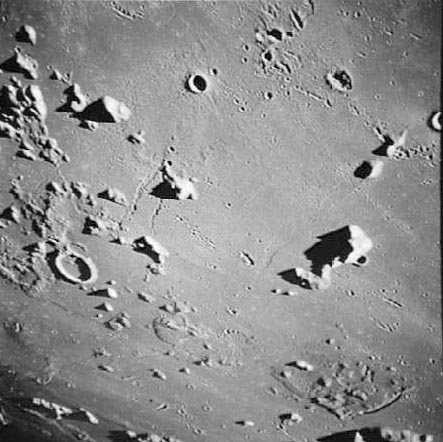Difference between revisions of "April 27, 2005"
| Line 26: | Line 26: | ||
[[iv_133_h3.jpg|Lunar Orbiter IV View ]] | [[iv_133_h3.jpg|Lunar Orbiter IV View ]] | ||
</p> | </p> | ||
| − | <p | + | <p><b>Yesterday's LPOD:</b> [[April 26, 2005|More Spectacular Flows in Imbrium]] </p> |
| + | <p><b>Tomorrow's LPOD:</b> [[April 28, 2005|Red Moon (and Blue Too)]] </p> | ||
</tr> | </tr> | ||
</table> | </table> | ||
| Line 53: | Line 54: | ||
===COMMENTS?=== | ===COMMENTS?=== | ||
Register, and click on the <b>Discussion</b> tab at the top of the page. | Register, and click on the <b>Discussion</b> tab at the top of the page. | ||
| + | <hr> | ||
| + | <!-- | ||
| + | You can support LPOD when you buy any book from Amazon thru [[Support_ LPOD|LPOD]]! | ||
| + | --> | ||
| + | <span style="font-size:88%"> | ||
| + | <center> | ||
| + | Contributions to http://www2.lpod.org/ are licensed under a Creative Commons Attribution No-Derivative-Works Non-Commercial 3.0 License. [http://www.creativecommons.org/licenses/by-nc-nd/3.0 http://www.wikispaces.com/i/creativecommons/by-nc-nd_3.0_80x15.png]<br> | ||
| + | </center> | ||
| + | </span> | ||
Revision as of 14:22, 1 February 2015
A Busy Place
Image Credit: Apollo 15 151-23268 |
|
A Busy Place We think of Imbrium as a vast sheet of lava (or lavas), mostly cleanly fringed by the Apennines and other mountain boundaries. This may be a false impression resulting from a lack of high resolution images! In this Apollo Hasselblad image recommended by Danny Caes we can see a part of Imbrium just north of the Carpathian Mts that has had a more complex history than simple flows of lava. The large unnamed mountain (Caes Mt?) at right center is rather far from the Carpathians to be considered part of that range, instead it seems related to the hills to the left (west). This is a 100 km expanse of rough terrain that might be equivalent to the Apennine Bench Formation near Archimedes. This moderate sun handheld Apollo shot shows features not seen in the Lunar Orbiter IV view of the same area. A segment of a wide linear rille is just left of Caes Mt. - it looks like it might continue to the two small linear peaks to the upper right. Natasha is the broad, flat-floored crater to the left center; below and to the left of this crater is a dome with an off-center elongated pit. To the lower right of Natasha there is a pancake-like dome or swell. This area is sprinkled with chains of secondary craters from Copernicus, and there are two crater chains not from Copernicus above Natasha. I hope to soon see a high resolution, low sun amateur image of this area! Related Links: Yesterday's LPOD: More Spectacular Flows in Imbrium Tomorrow's LPOD: Red Moon (and Blue Too) |
|
Author & Editor: Technical Consultant: Contact Translator: A service of: |
COMMENTS?
Register, and click on the Discussion tab at the top of the page.
Contributions to http://www2.lpod.org/ are licensed under a Creative Commons Attribution No-Derivative-Works Non-Commercial 3.0 License. 




